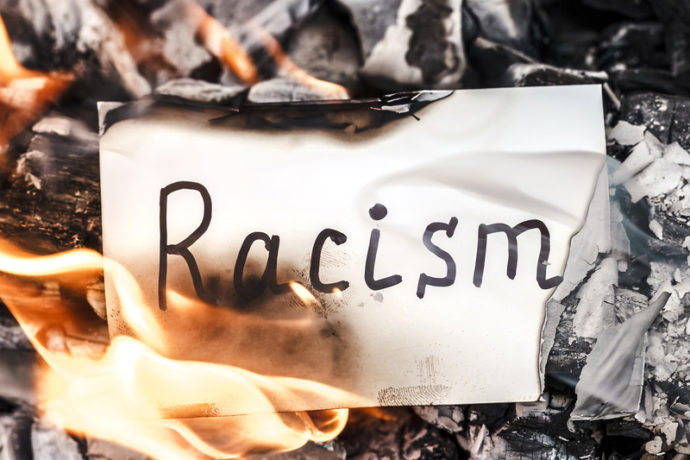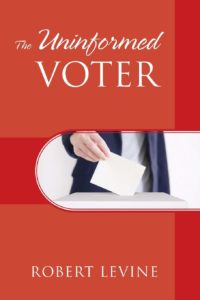
 White nationalism and white supremacy have always been woven into the American fabric, even before the Revolution. Over the last decade however, they have grown in power and adherents. Is it possible to subsume this movement into the maw of American democracy, taming its tendency towards violence and moderating its racial exclusiveness to promote its other ideas? Can nationalism cross racial lines and be a unifying movement for the nation?
White nationalism and white supremacy have always been woven into the American fabric, even before the Revolution. Over the last decade however, they have grown in power and adherents. Is it possible to subsume this movement into the maw of American democracy, taming its tendency towards violence and moderating its racial exclusiveness to promote its other ideas? Can nationalism cross racial lines and be a unifying movement for the nation?
During his four years in office, Trump’s repeated messages about keeping immigrants out of America (unless they were from Northern Europe) and building a wall between the U.S. and Mexico buoyed white nationalists. The president refused to denounce white supremacists and racists who supported him, saying that they were very fine people. Some of the white supremacist groups were outgrowths of the Ku Klux Klan, the White Citizen’s Councils, the John Birch Society, and neo-Nazi organizations that supported Germany prior to World War II. Some arose from local political groups and militias and some from Christian identity movements. A number also formed as if by spontaneous combustion over the Internet, with like-minded people finding each other.
Many of the white supremacists are white working men and women, blue-collar workers, and unemployed people who need to feel privileged in a world where they are on the bottom rungs of the economic ladder. Their white lineage makes them feel special. However, there are white collar workers, corporate executives, professionals and successful business men and women who are also racists, believe in white supremacy and support these organizations either overtly or covertly. A number of policemen and members of the military are active white supremacists as well.
Counterintuitively, many white supremacists started with feelings of white victimhood, with the concept of ‘whiteness’ arising from many European-Americans during the late 19th and early 20th centuries. The idea of whiteness provided working class European-Americans with some social and psychological advantages, along with economic ones. But during the late 20th and 21st century, job losses and economic stresses accentuated the idea of white victimhood. Forming or joining white supremacist organizations provided the working classes with feelings of pride and the notion that they were members of a privileged group. This ‘specialness’ of the white working classes and racist attitudes was reinforced by Trump, earning the devotion of the working classes.
When unjustified killings and maiming of blacks occurred during 2020, Trump took the side of the police instead of chastising them for the use of excessive force. In Kenosha, Wisconsin, he visited the police department after a black man was shot seven times in the back and paralyzed in front of his three young children. Trump ignored the man and his family. He also disregarded or made light of the Black Lives Matter movement, focusing on the riots and destruction that sometimes accompanied BLM demonstrations. He has denied as well that there is systemic racism in policing and American culture that needs to be addressed. What better president could there have been to bolster white ethno-nationalism?
Trump also tried to frighten voters, making law and order, racism and white grievance the driving forces of his campaign for re-election as president. He claimed that the Democrats and Biden would destroy the suburbs by moving in poor black families. Crime and violence would then increase and property values would drop. No president in recent history has aligned himself so completely with white voters, using overt racism in his speeches and tweets. Trump has also manipulated his nationalist supporters with conspiracy theories, such as his declarations that the 2020 presidential election was stolen from him.
The FBI, CIA, and Homeland Security are aware of possible domestic terrorists and do not want to be caught flat-footed as they were with the Oklahoma City bombings. Among private organizations with an interest in white nationalists are the Southern Poverty Law Center (SPLC), the Anti-Defamation League and the ACLU. The SPLC is particularly active in tracking down and exposing white supremacists who may be dangerous. Other groups include the Action Network and the Legal Aid Justice Center.
Making white nationalist groups more transparent is a step towards diminishing violence. Education about the humanness of other ethnic and racial groups through schools and churches, and the need for compassion and understanding might sway some of the less diehard members. However, using disaffected white supremacists and nationalists who were once members of these groups to explain their transformation might be more helpful. Of course, those who engage in violent acts or threaten terrorist actions must be brought to the bar of justice and incarcerated. But even in prison, attempts can be made to change views. It will be a heavy slog to try and change the hearts and minds of white nationalists who have been imbued with ideas of white supremacy since childhood and do not want to change their perceptions, particularly if they live among tribes of similar believers. But attempts at change must be pursued.
www.robertlevinebooks.com
Buy The Uninformed Voter on Amazon and Barnes and Noble
Photo 186433441 © Dmitriy Komarov | Dreamstime.com
Posted at 10:09 AM in Donald Trump, immigrants, racism, white nationalism, white supremacy, white victimhood | Permalink | Comments (0)
Tags: Donald Trump, education, immigrants, racism, Republican party, transparency, white nationalists, white supremacists, white victimhood
Political junkie, Vietnam vet, neurologist- three books on aging and dementia. Book on health care reform in 2009- Shock Therapy for the American Health Care System. Book on the need for a centrist third party- Resurrecting Democracy- A Citizen’s Call for a Centrist Third Party published in 2011. Aging Wisely, published in August 2014 by Rowman and Littlefield. Latest book- The Uninformed Voter published May 2020
















